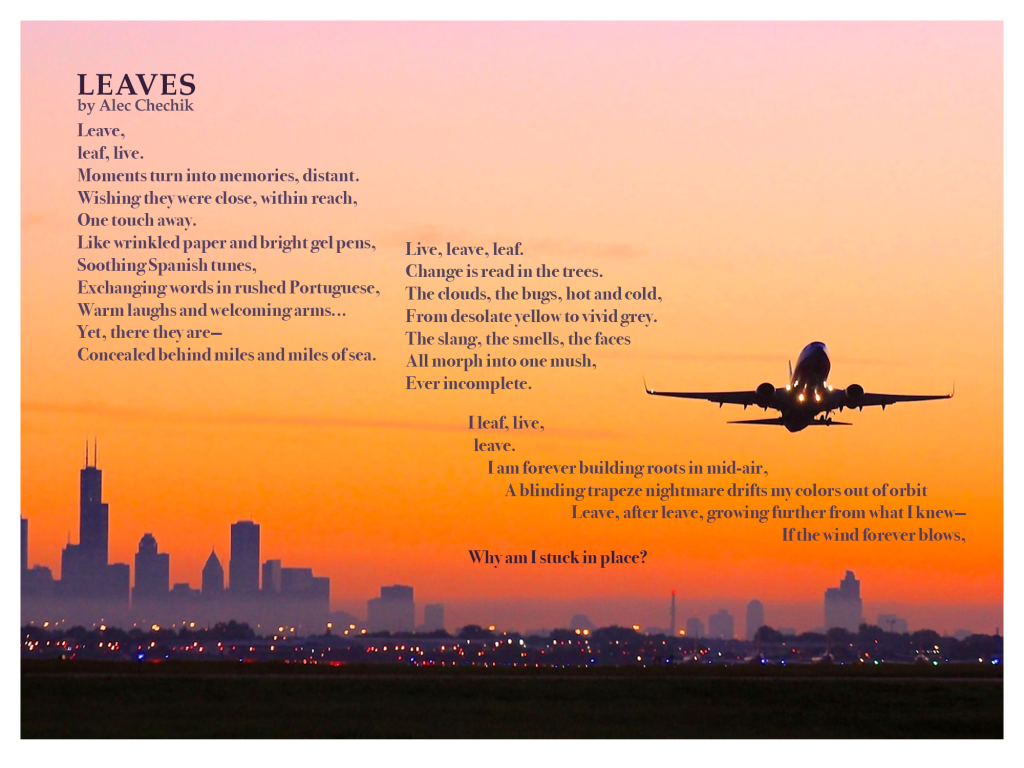For the Conceptual Project, we were tasked with developing our abstract thinking to produce an extensive array of works that challenged our communication skills. It had a focus on creative risk-taking, challenging us to ask “How can I use unconventional forms to express myself?”. With professional equipment and software, we expressed our views and stories through poetry, music, art, animation, experimental film, and web production. This project made me delve into forms of expression I had never worked on before; In Animation, we learned the principles of animation to apply them in short, traditionally animated pieces using paper cut-outs, charcoal, dry erase-markers, and sand, for example.
Personal Poem – Leaves
In our English classes, we wrote and studied the key elements of poetry and wrote multiple kinds of poems. This was our free verse poem, in which we selected a combination of an emotion and an experience to explore it through. Then, in Digital Media, we recorded them using our Tascam recorders and mixed our recordings in Pro Tools, complete with their own visual composition.
I valued the Personal Poem unit because we created a visual and auditive experience based on our own poems. Creating a piece of media that combines visuals, writing, and audio makes it more impactful.
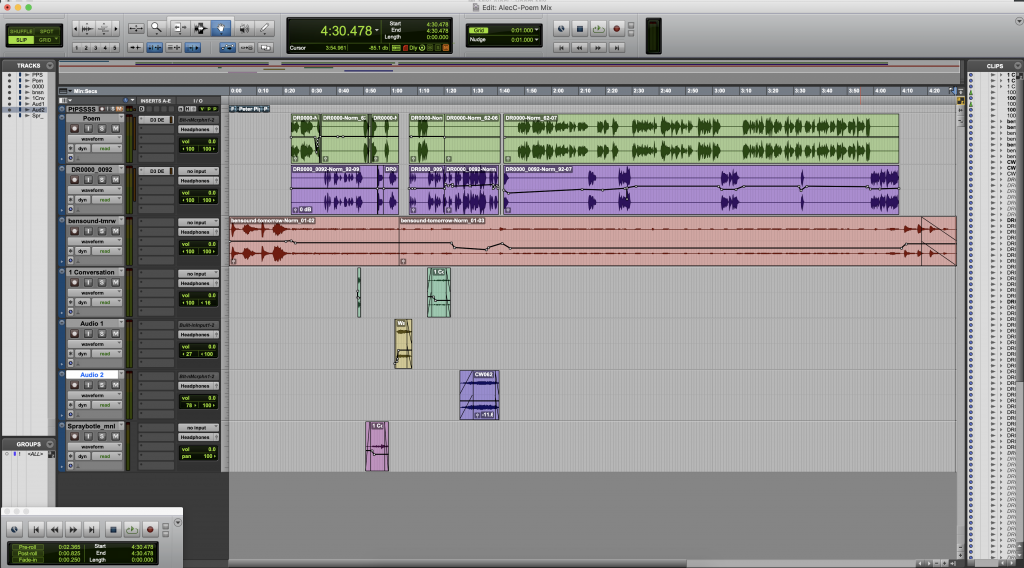
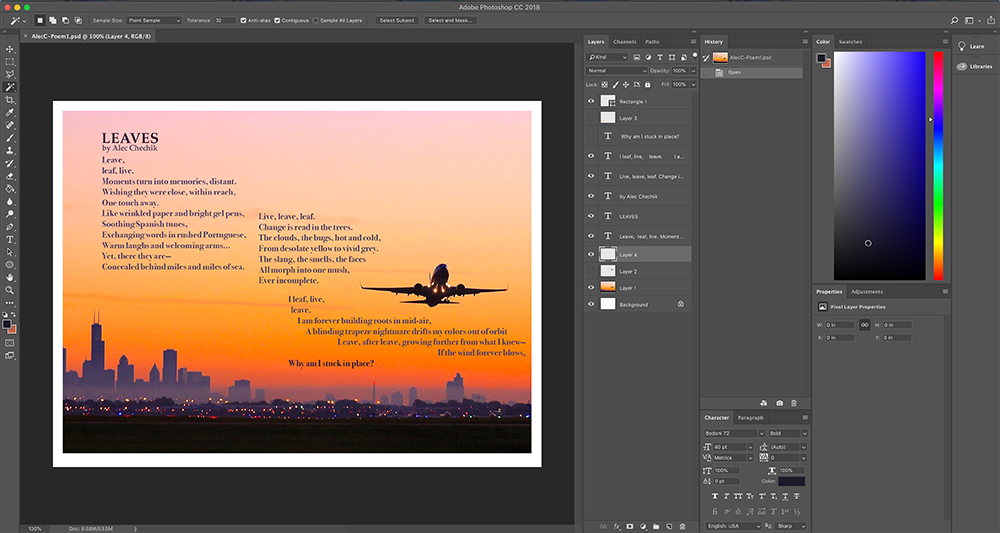
Photo Haiku
We were tasked with writing a haiku based on random emotions and experiences in English and then creating an image to accompany the text. In Digital Media, we recorded them and created a video using Premiere Pro.
I valued the emphasis on video elements that would complement the mood of the poem, like background music, sound effects and text.
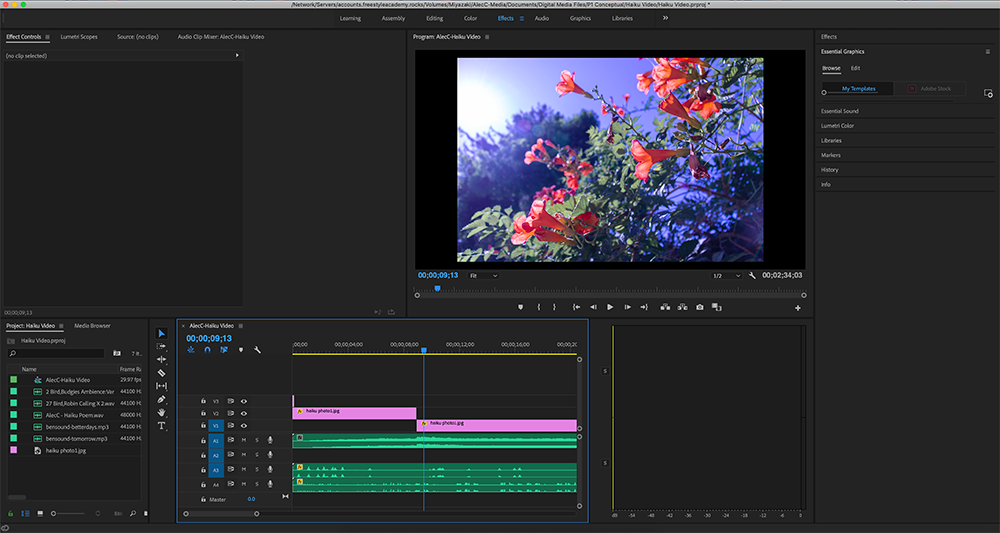
Elements & Principles of Art
To improve our work as media creators, Juniors in Digital Media studied the elements of art and design. We then created a slideshow with examples of each element/principle in traditional art, modern art and photography.
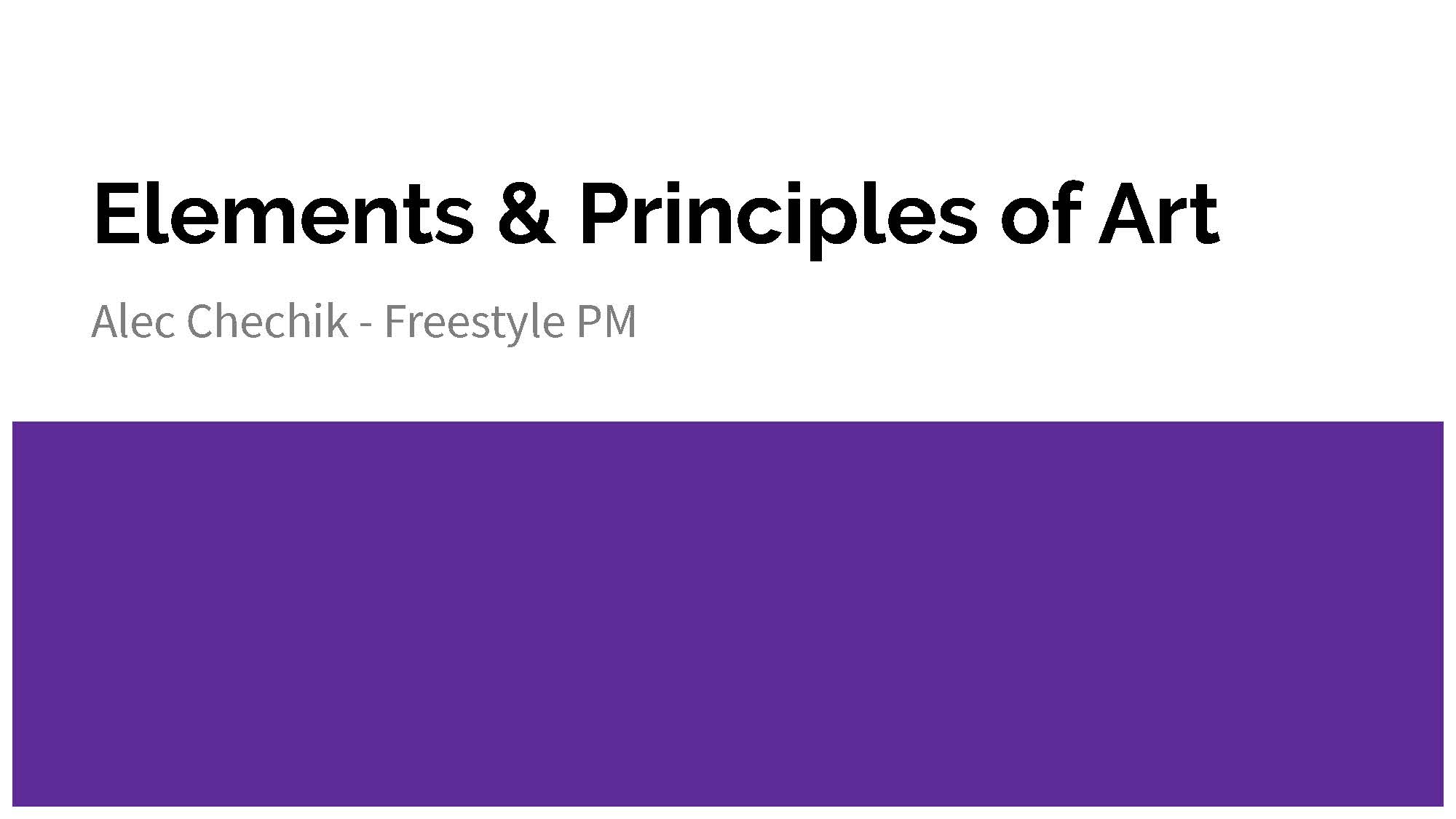
Animation Work
In Animation class, Juniors learned the principles of animation and applied them in traditional animation projects. We had to design our own characters and work with storytelling.
Phenakistoscope wheel
Phenakistoscopes were some of the first forms of animation, invented in 1832 for entertainment purposes. They consist of a spinning disc with drawn pictures and slits so that when you spin them in front of a mirror, the images seem to move. We could use light tables to make sure the frames were aligned and were only supposed to use a few colors to simplify the animation.


Zoetrope strip
For the zoetrope, we drew sequential drawings on a strip of paper that would be inserted into the spinning device.

Flipbook animation
Animation Juniors had to create a 96-page flipbook based on an emotion while employing the learned principles of animation, such as squish and squash, exaggeration and anticipation.
Direct Techniques 1 & 2
We created two projects utilizing varied animation techniques, from sand on lightboards to paper cut-outs and dry erase markers.
